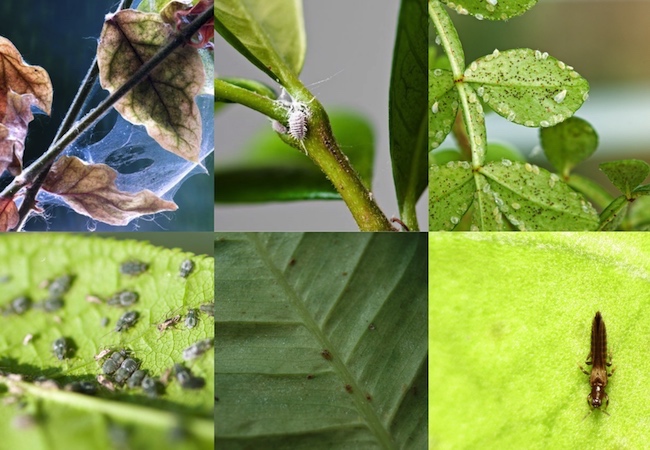

We may earn revenue from the products available on this page and participate in affiliate programs. Learn More ›
You’ve got a green thumb, huh? Well, that’s a start. But it takes more than experience to prevent critters from infesting your indoor plants. You need a little luck, first of all. But you also need a plan for fighting back if and when bugs invade. Remember: Houseplant pests aren’t merely off-putting; rather, they rob plants of their beauty and compromise their long-term health. No—infestations aren’t a death sentence (at least not most of the time). But they don’t disappear on their own, either. To save your plants, you need to act, and you need to do so sooner than later. Ready? Continue reading now for key details on identifying and eliminating all the most common culprits.
APHIDS
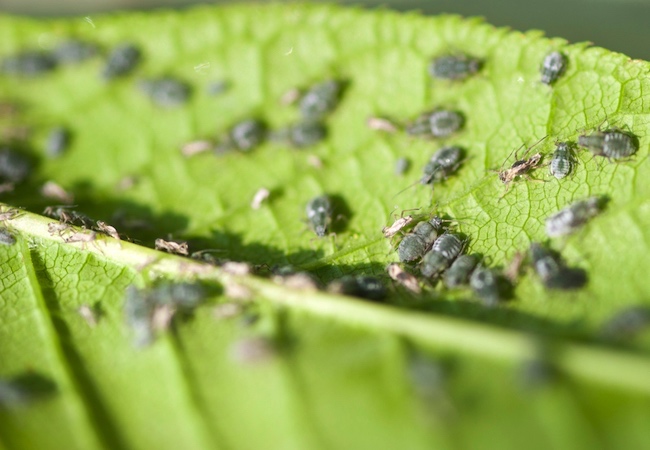
What you’ll see: Plants weakened by aphid infestations typically display stunted growth, along with curled or otherwise deformed foliage. The insects themselves—teeny-tiny in shape and green, brown, or black in color—hide on the underside of leaves.
What to do: Take the houseplant into the kitchen and wash the aphids away under a stream of water. Or head outdoors and simply brush the aphids off with your fingers (or a cotton swab). Finally, apply neem oil or insecticidal soap to prevent the aphids from returning.
MEALYBUGS
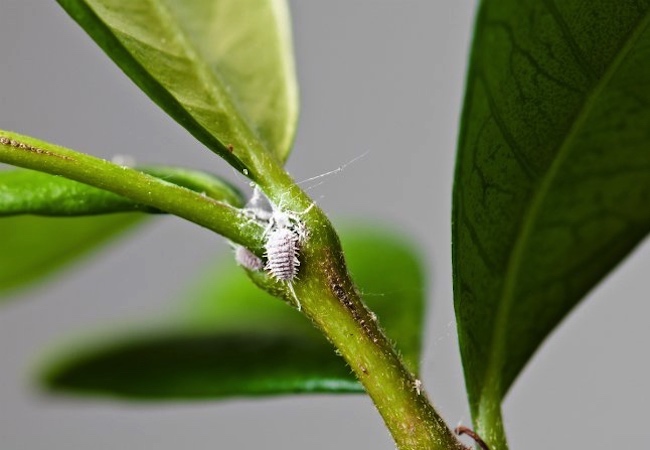
What you’ll see: White and cottony in appearance, mealybugs not only stunt plant growth but mar the look of stems, nodes, and foliage with a residue that, like the insect itself, looks white and cottony. Note that plants infested by mealybugs often feel sticky to the touch.
What to do: First, quarantine the affected houseplant away from others. Next, remove the mealybugs and their left-behind residue with a rubbing alcohol-soaked cotton swab (or arm yourself with a soft brush or cloth and wash the plant with mildly soap water).
SPIDER MITES
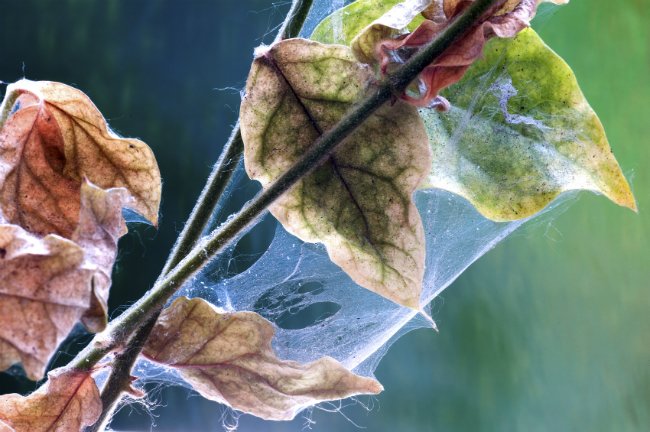
What you’ll see: Spider mites make their presence known by weaving webs around leaves and stems, and also by yellowing and shriveling foliage. But while their handiwork may be hard to miss, catching the tiny, light-colored arachnids in the act isn’t easy.
What to do: Saving a plant from a severe spider mite infestation may not be possible, but if you catch the problem early, rinse the plant under water multiple times. Then, for prevention, apply insecticide—ideally one that contains the mite-repelling chemical bifenthrin.
SCALE INSECTS
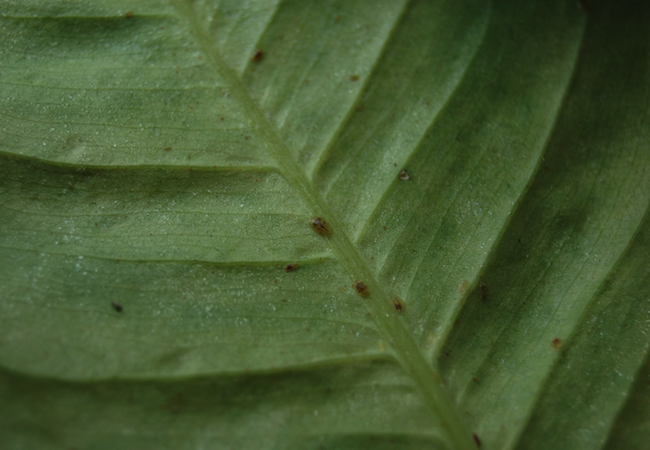
What you’ll see: Like mealybugs, scale insects deposit a sticky fungal sap that blocks photosynthesis, arrests growth, and gradually kills its host plant. Once embedded on the underside of leaves, scale often look more like organic protrusions than an invasive threat.
What to do: Isolate the plant away from others. Next, prune the affected leaves and remove lingering residue by using cotton swabs and rubbing alcohol. Repeat the treatment every few days until the plant turns the corner (or until you lose faith that it’ll ever recover).
THRIPS
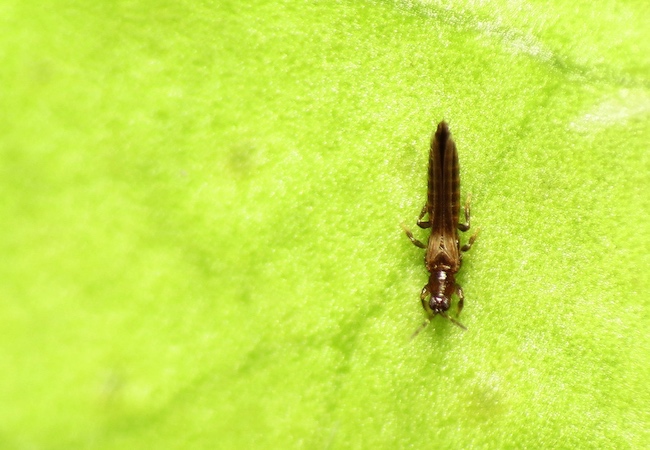
What you’ll see: Being microscopic, thrips evade easy notice, but their damaging and discoloring effects are plain to see. Bear in mind that more than other pests, thrips tend to attack plants that flower. A magnifying glass may help you confirm their presence.
What to do: Every few days, mist the infested plant with a fine spray of water. Then, after each course of misting, treat the plant with neem oil or insecticidal soap. That makes thrips unable to feed on the plant, soon leading to the death of any that remain.
WHITEFLIES
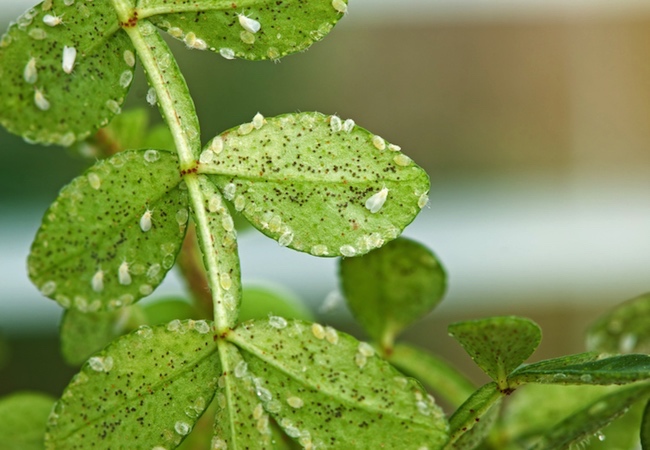
What you’ll see: Recognizable for their yellow-white bodies and heart-shaped wings, whiteflies gather in groups, usually on the underside of leaves. In time, the host plant begins to look dried out and sickly, and its foliage may drop, leaving stems nearly bare.
What to do: Once you’ve set the affected plant off on its own, remove whiteflies with a vacuum cleaner (the upholstery attachment works well). Next, place sticky fly traps near the quarantined plant. If those traps fail to capture any whiteflies, you can put your plant back in its original spot, without fear of whiteflies returning or spreading to other specimens.
